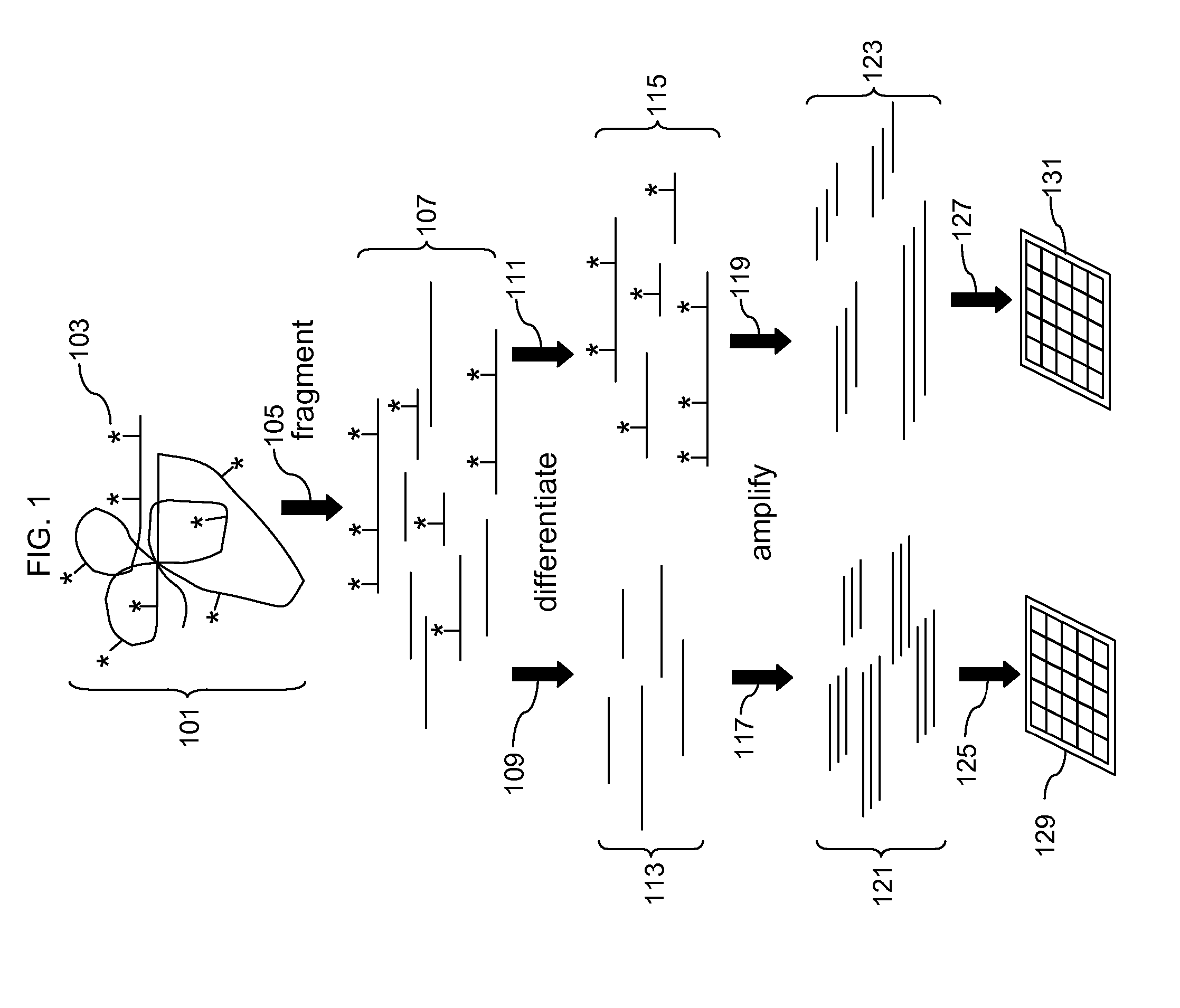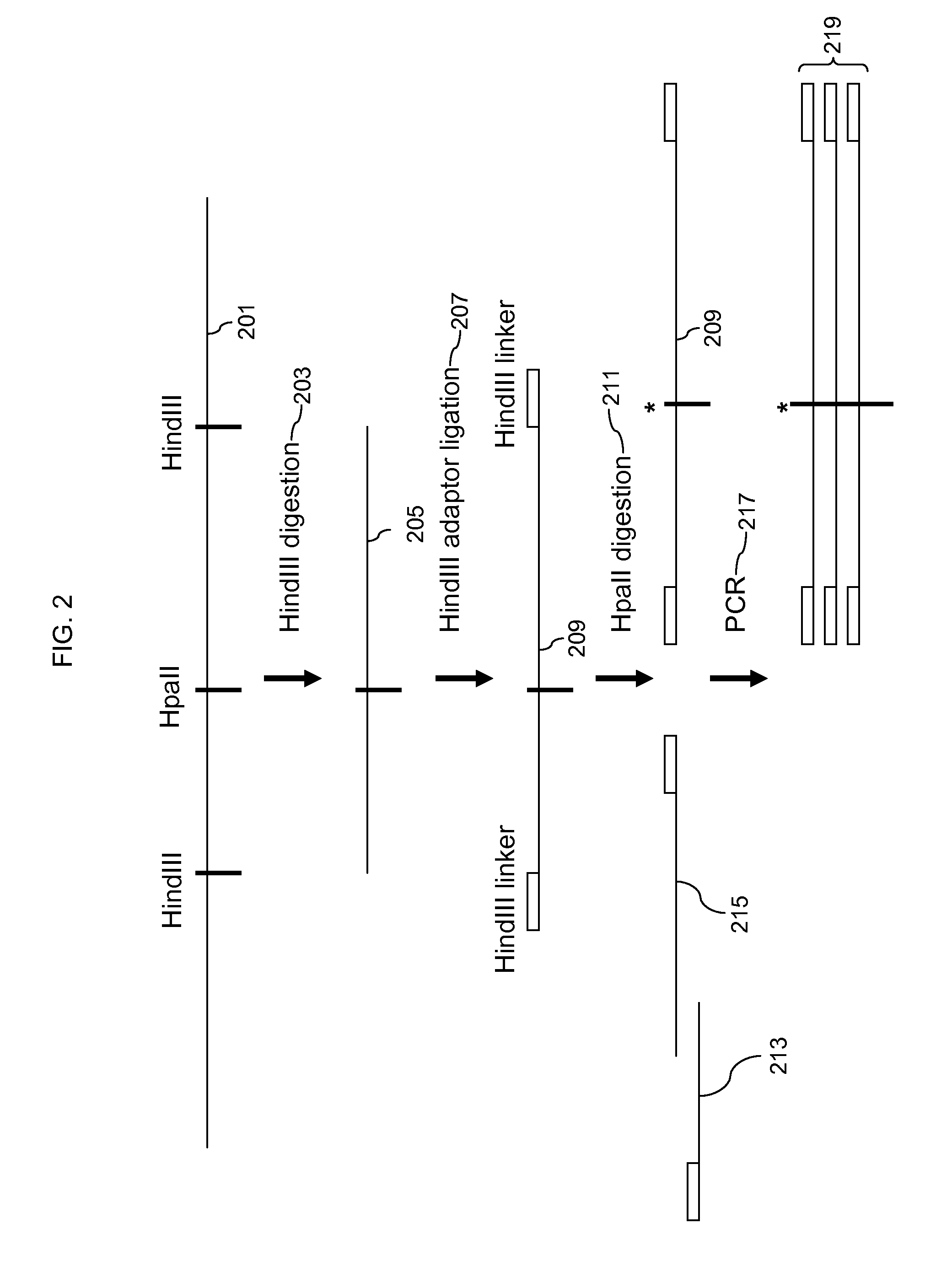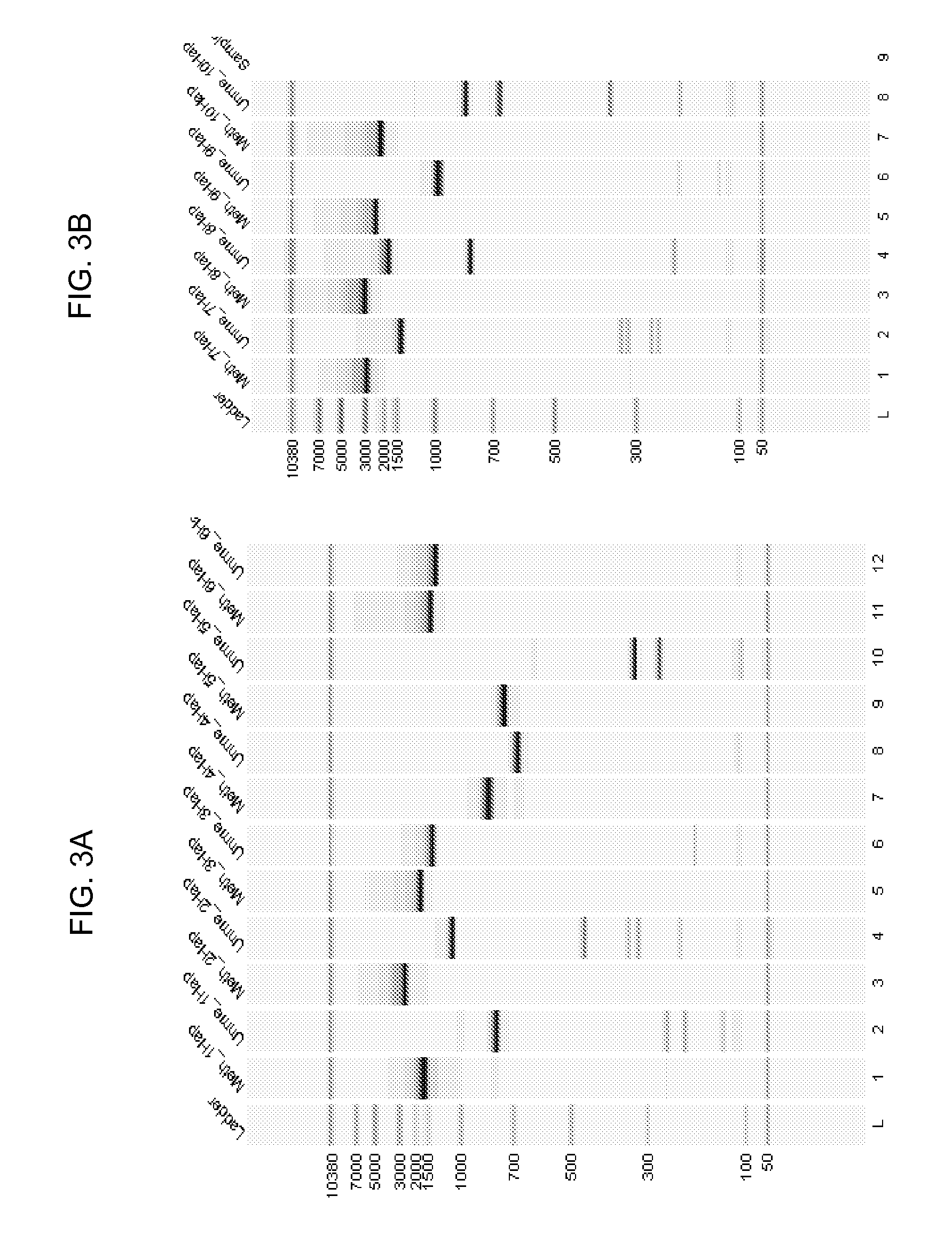Analysis of methylation using nucleic acid arrays
a nucleic acid array and array technology, applied in the field of arrays and methods for detecting methylation of nucleic acids, can solve the problems of genomic instability, alterations in the normal methylation process,
- Summary
- Abstract
- Description
- Claims
- Application Information
AI Technical Summary
Benefits of technology
Problems solved by technology
Method used
Image
Examples
example 1
[0091]Human CpG island array. Sequences used in the design of the Human CpG Island Array were selected from NCBI human genome assembly (Build 35, UCSC hg17, May 2004). Repetitive elements were removed by RepeatMasker. There are total of 27,801 CpG islands annotated by UCSC in NCBI human genome assembly, as defined by an algorithm that measures expected versus observed CpG composition, given the GC content of the segment. CpG islands were also filtered for GC content 50% or greater and length greater than 200 bp. For a majority of the CpG islands, 8 probes were selected as a probe set to represent each island. For the islands larger than 5 kb, three probe sets (8 probes each) were selected.
[0092]The 27,801 islands represent an initial set of 27,771 that was identified in a first analysis. This first analysis missed 30 islands on random chr2 and random chr10. These 30 were subsequently processed and added to the total to obtain 27,801. Of the initial 27,771 the size distribution was a...
example 2
[0096]Human Promoter 1.0R array. Sequences used in the design of the Human Promoter 1.0R Array were selected from NCBI human genome assembly (Build 34). Repetitive elements were removed by RepeatMasker. Promoter regions were selected using sequence information from 35,685 ENSEMBL genes (version 21—34d May 14, 2004), 25,172 Refseq mRNAs (NCBI GENBANK Feb. 7, 2004), and 47,062 complete-CDS mRNA (NCBI GENBANK Dec. 15, 2003). The probes selected for the Human Promoter 1.0R Array are a subset of the probes used in the Human Tiling 2.0R Array Set (P / N 900772).
[0097]Oligonucleotide probes are synthesized in situ complementary to each corresponding sequence. Probes are tiled at an average resolution of 35 bp, as measured from the central position of adjacent 25-mer probes, leaving a gap of approximately 10 bp between probes. Each promoter region covers approximately 7.5 kb upstream through 2.45 kb downstream of 5′ transcription start sites. For over 1,300 cancer-associated genes, coverage o...
example 3
[0098]To test the method of enrichment of methylated fragments in a sample and detection of enrichment on an array a set of Arabidopsis genomic controls was used in combination with a CpG island array that contains probes to the Arabidopsis controls. The general scheme is as shown in FIG. 2. Briefly, control DNAs that are either methylated or unmethylated were fragmented with HindIII and ligated to a HindIII adaptor sequence. The adaptor ligated fragments were then digested with HpaII which is a methylation sensitive restriction enzyme. Unmethylated fragments are fragmented while methylated fragments are not. Fragmentation of the unmethylated fragments blocks PCR amplification using a primer to the adaptor so only the fragments that were methylated at the HpaII site and were not digested by HpaII will be amplified by PCR.
[0099]Seven different control DNAs, Ara1, Ara2, Ara6, Ara7, Ara8, Ara9, and Ara10 were used. The controls are each a different clone of an Arabidopsis genomic DNA r...
PUM
| Property | Measurement | Unit |
|---|---|---|
| temperature | aaaaa | aaaaa |
| temperature | aaaaa | aaaaa |
| temperature | aaaaa | aaaaa |
Abstract
Description
Claims
Application Information
 Login to View More
Login to View More - R&D
- Intellectual Property
- Life Sciences
- Materials
- Tech Scout
- Unparalleled Data Quality
- Higher Quality Content
- 60% Fewer Hallucinations
Browse by: Latest US Patents, China's latest patents, Technical Efficacy Thesaurus, Application Domain, Technology Topic, Popular Technical Reports.
© 2025 PatSnap. All rights reserved.Legal|Privacy policy|Modern Slavery Act Transparency Statement|Sitemap|About US| Contact US: help@patsnap.com



